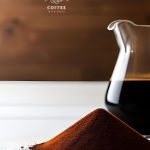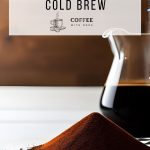The beauty of making cold brew lies in the freedom to experiment.
In the following article, I go into more detail about brewing cold-brew coffee, covering everything you need to know and the options for making it.
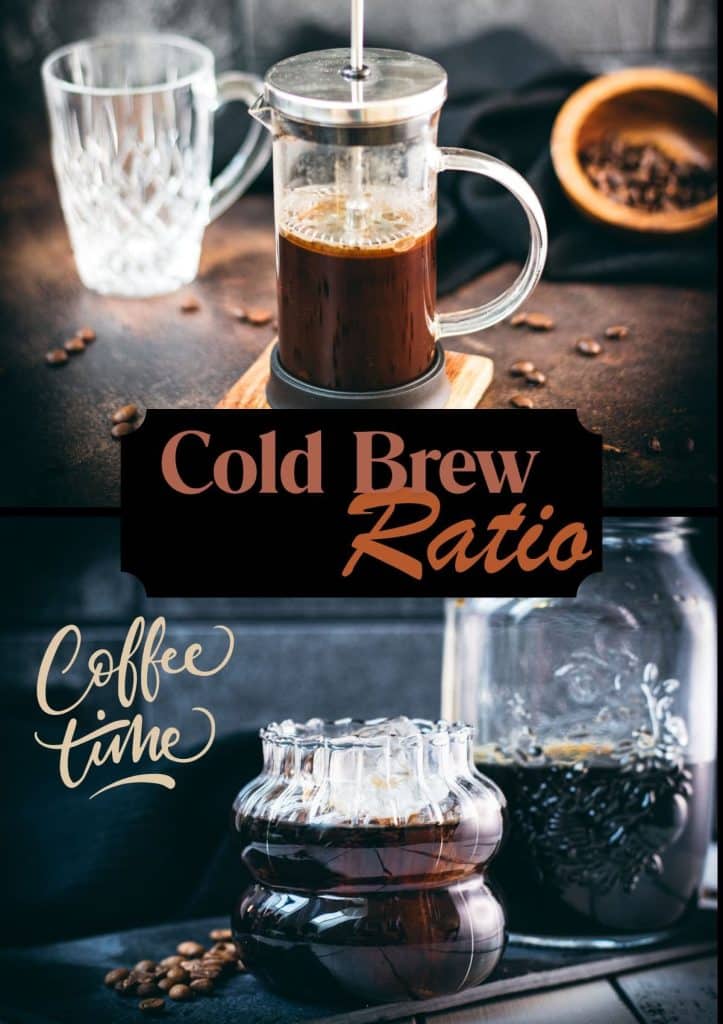
Don’t forget, Cold brew doesn’t adhere to a strict recipe but typically falls within the range of a ratio of 1 to 6 and 1 to 10. This translates to roughly 60-100 grams of coffee per liter of water (or 2.12-3.53 ounces per quart).
Feel free to adapt the recipe to your taste. As a beginner, starting with a 1 to 8 ratio (80g (2.82 oz)), is a good balance. From there, you can confidently adjust to find your perfect brew.
So, go ahead and have fun experimenting! ☕️
What is Cold Brew Coffee?
Cold brew coffee lives up to its name, being brewed with cold water rather than hot. This method of extraction is a slow and patient process, resulting in a remarkably smooth and flavorful cup.
To create a cold brew, coffee grounds are steeped in cool, filtered water for six to twelve hours. Coarsely ground beans are preferred for optimal flavor extraction. Once steeping is complete, the grounds are filtered out, leaving behind a brew that’s distinctly low in acidity yet rich and velvety in taste.
While a cold brew may resemble iced coffee in appearance, their methods differ significantly. Iced coffee is brewed hot and then cooled, often resulting in a slightly sour or bitter taste.
On the other hand, cold brew is brewed and maintained at a cool temperature throughout, yielding a subtly sweet and exceptionally smooth coffee experience.
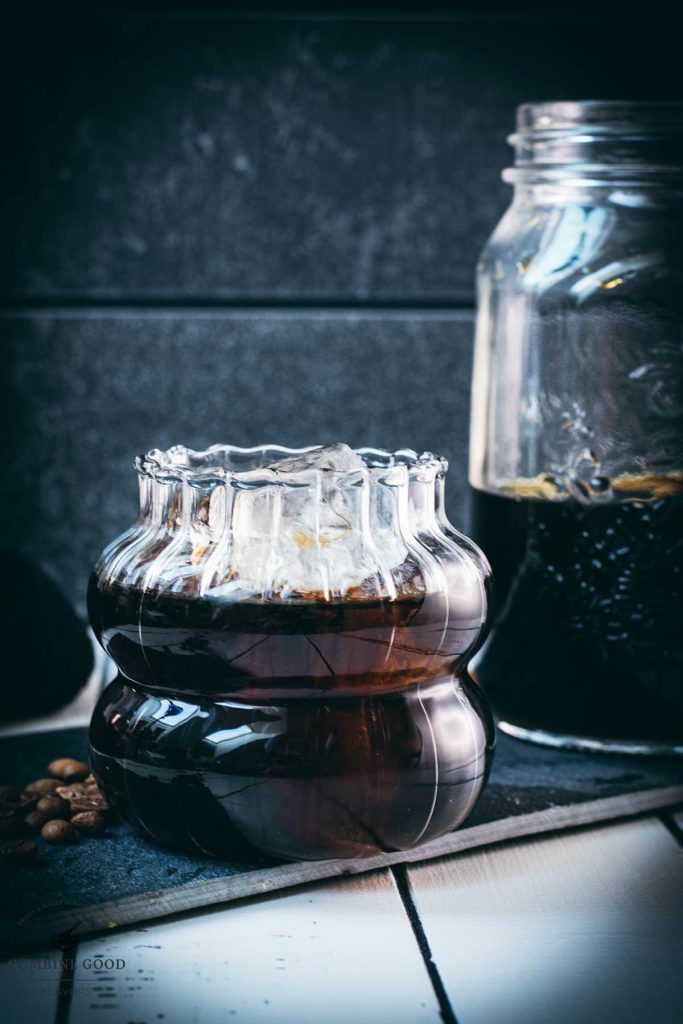
What does cold brew taste like?
Cold brew is known for its smooth and mild flavor profile, featuring fruity notes and a subtle sweetness. Its gentle, rounded taste, often compared to velvety or creamy, comes from its low acidity.
This low acidity is thanks to the cold water extraction method, which reduces the extraction of bitter compounds from the coffee grounds, resulting in a smoother brew. Cold brew is also easy on the stomach, making it a great choice for sensitive individuals.
The sweetness and fruity flavors can vary depending on the type of coffee beans used, so it’s essential to choose beans carefully for the desired flavor. Overall, cold brew brings out the natural flavors of the coffee beans, offering a refreshing and satisfying drink with a clean finish.
Cold Brew Beans
Consider the following points when selecting coffee for cold brew:
- Opt for 100% Arabica beans; Robusta beans can overpower the brew, resulting in an earthy and unpleasant taste.
- Choose a light-colored filter coffee roast for optimal results in cold brewing.
- Coffees sourced from Kenya and Ethiopia typically unveil fruity and floral notes in cold brew, while varieties from Brazil, Peru, or Costa Rica excel in delivering creamy, chocolaty flavors.
- Look for coffees with pronounced sweetness, whether they’re washed or dry-processed. These are particularly well-suited for cold brewing.
- Purchase your coffee from specialty coffee roasters rather than those that sell industrial-grade beans, as industrial-grade beans are often overly dark-roasted.

Cold Brew Grind Size
As extraction time increases, the coarseness of the grind should also increase. That’s why you want a very coarse grind when preparing a cold brew, even coarser than when you prepare French press coffee. Coffee begins losing its aromatic qualities within moments of being ground. Hence, it’s best to grind the coffee just before brewing to preserve its flavors and aromas.
When using the Comandante manual coffee grinder, adjust it to between 35 and 40 clicks (equivalent to 70-80 red clicks).

Comandante Grinder in American Cherry – $360.00
from: Intelligentsia Coffee, Inc.
How to make Cold Brew at Home?
Making cold brew at home is a straightforward process involving steeping coarsely ground coffee in cold water for an extended period, typically between 6 to 12 hours.
Whether using a jar, French press, or Cold Brew Bottle, the key steps include combining coffee and water, steeping in the fridge, and straining before enjoying the smooth, rich flavor of cold brew.
There are different ways to prepare cold brews at home.
- French Press Cold Brew
- Cold brew with the Mason Jar
- UKEG Nitro Cold Brew Coffee Maker
- Hario Cold Brew Bottle
and many more. Try out the following recipes.

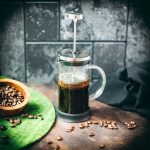
How long does Cold Brew Coffee last in the fridge?
Consuming cold brew within 7 to 10 days of brewing is best when stored in the refrigerator in an airtight container to maintain its quality.
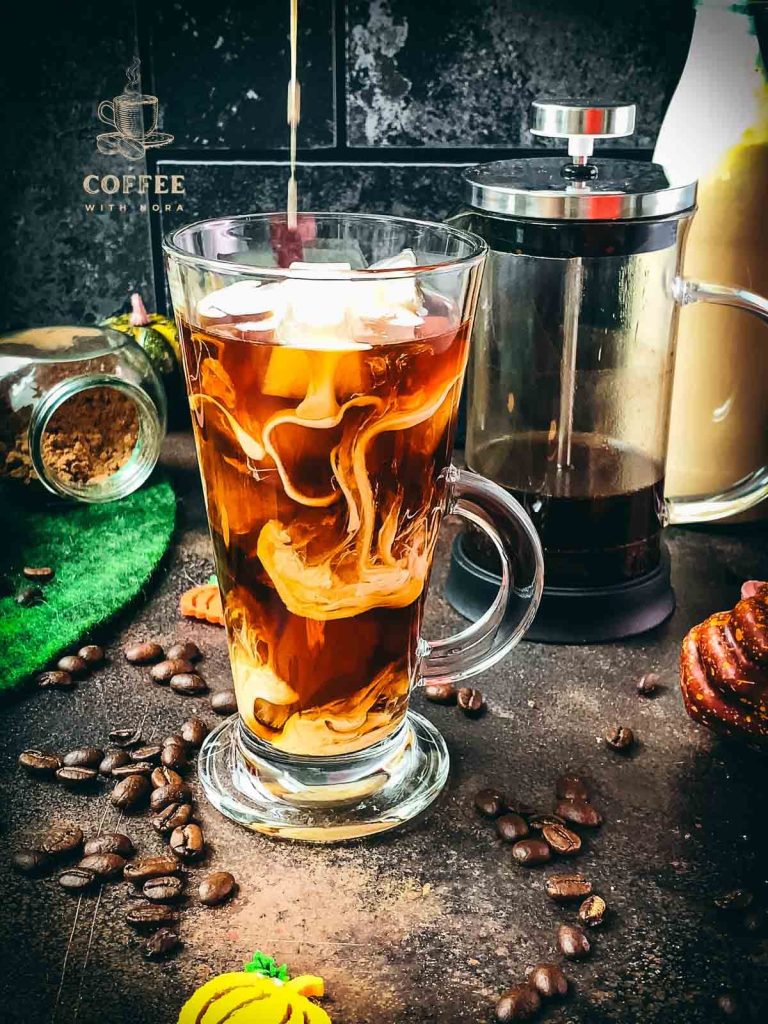
Does Cold Brew Go Bad?
Cold brew coffee can indeed go bad if not stored properly. While its cold brewing process helps to slow down the deterioration of flavor compared to hot-brewed coffee, it is still susceptible to spoilage over time. Cold brew can develop off flavors and lose its freshness if left unrefrigerated or exposed to air for too long.
Cocktails with Cold Brew Coffee
There are many possibilities for using cold-brew coffee to mix cocktails. As you can see, many are in the pipeline, and I am trying to have them finished soon.
- Cold Brew Black Russian (coming soon)
- Cold Brew White Russian
- Cold Brew Gin Tonic (coming soon)
- Cold Brew Tonic (coming soon)
- Ginger Cold Brew
- Chocolate Iced Coffee with Cold Brew
- Strawberry Iced Coffee with Cold Brew
- Vanilla Sweet Cream Cold Brew
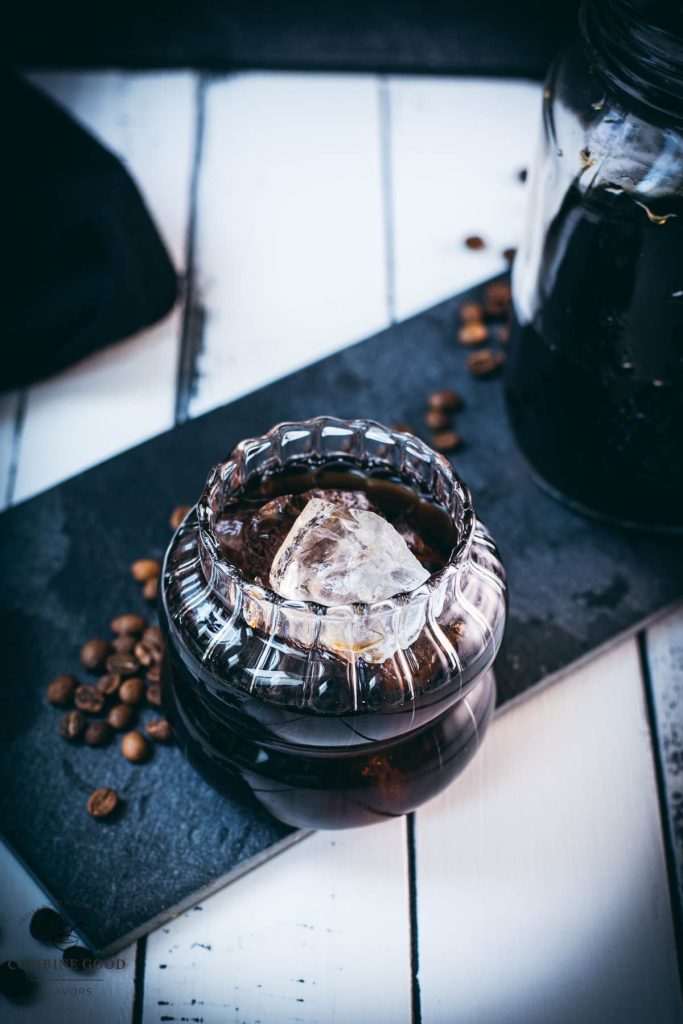
More Recipes and Tips You Might Enjoy:
- Gifts for Cold Brew Coffee Lovers
- Pumpkin Cream Cold Brew
- Can You Make Cold Brew in a French Press
- Cold brew with the Mason Jar
- Iced Cinnamon Dolce Latte
- Iced Latte Caramel with Homemade Caramel Milk
- Iced Coffee with Milk
- Iced Eggnog Latte
- Iced Lavender Latte
- Iced Honey Latte
- How to make Iced Chocolate Almond Milk Shaken Espresso?
Food Safety
- Don’t leave food sitting out at room temperature for extended periods
- Never leave cooking food and beverages unattended
- Always have good ventilation when using a gas stove


